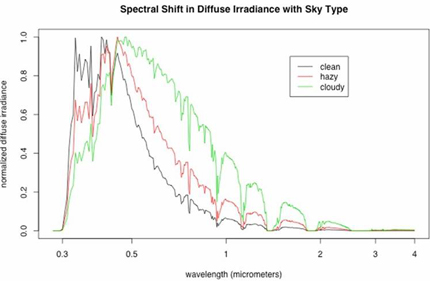FAQ from SolarExpo 2011: the spectral changes due to changing weather conditions
Published: Tuesday, May 10, 2011
The SolarExpo in Verona, Italy last week was a successful event for Eurelettronica ICAS, our Italian distributor. With lots of visitors on the stand and very interesting discussions. Our product specialist was available at the booth in Hall 7 and answered many questions related to the measurement of solar radiation in solar energy applications.
“For example, questions about positioning the sensor (angle / location) and the number of sensors required. But also questions about the preference for reference cell versus pyranometer (download more information here).” Says Ruud Ringoir, product specialist and business manager at Kipp & Zonen.
“At SolarExpo I discussed the spectral changes due to changing weather conditions a lot. That is why I would like to share this matter with you: The pyranometer with broad spectral range will correctly record this while a reference cell will not. Depending on the cell technology the output can be affected by these changes. If the reference cell and PV panel are not identical there can be a significant difference. The pyranometer will give here an independent and correct value for the total available radiation.”
The picture below shows the different spectral distribution under different sky conditions.

SolarExpo is an international exhibition that focuses on solar energy and solar technology. This event is held annually in Italy and attracts visitors and industry professionals from all over the world interested in promoting green technology and sustainable energy. SolarExpo is organised on an annual basis by the Fiera di Vicenza and the 2011 edition of this 3 Day event was held at the Verona Fiere from 4 to 6 May. The SolarExpo 2011 plays an important role in developing the region’s market for solar technology and setting about new trends to help in reducing greenhouse gases.